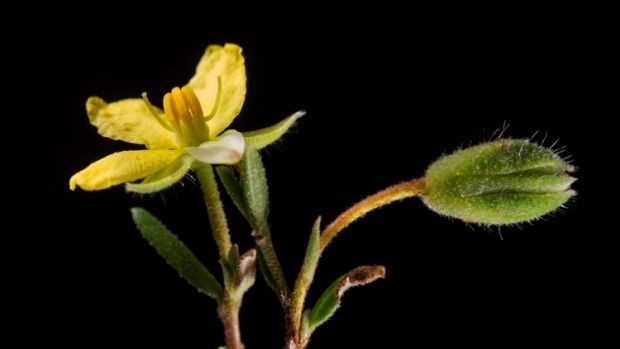Over 200 years ago the botanist Robert Brown, collected many specimens of Australian plants that were then new to science. One of those specimens, a plant to become known as a species of the genus Hibbertia or guinea-flowers (common name), was collected near Sydney. Sadly, Brown was one of the first and last scientists to officially see that particular species alive, with the final recorded collection in 1823. An apparent casualty of the development of the Sydney area, it was subsequently and sadly believed to be extinct.
State Herbarium of South Australia’s Honorary Research Associate, 77-year-old Dr Hellmut Toelken, is an authority on Hibbertia. His taxonomic research on the numerous collected and preserved specimens held in Australian and overseas herbaria (remember Australia didn’t have any official herbaria in the early days of settlement, so all the original collections of Australian plants went to overseas herbaria, like the British Natural History Museum or Kew Gardens) lead him to re-examine these old specimens—one of the scientific benefits of having collected specimens stored in perpetuity—and to describe the plant as Hibbertia fumana in 2012 (Toelken & Miller, J. Adelaide Bot. Gard. 25 (2012) 71-96, 1.8mb PDF).
Hellmut had an inkling from past experience that once a species is properly described and published, it is often rediscovered. And sure enough, using his new identification key, a population of 370 plants was found in a small remnant of native vegetation on Sydney’s south-west fringe in late 2016, and provisionally listed as critically endangered in December last year. The discovery also generated some controversy, which demonstrates the importance of having up-to-date taxonomic knowledge (see also articles in The Sydney Morning Herald and The Guardian).

Hibbertia fumana, flower and bud. Photo: A.E. Orme.
Taxonomic discovery can also teach us much about the evolution of our landscapes and past climates (and test our comfortable assumptions!). It also shows us how important it is to have well documented preserved specimens to refer back to, particularly when extraordinary discoveries require extraordinary proof.

Hibbertia hirsuta, showing the very reduced, small florwer. Photo: Key to Tasmanian vascular plants web-site.
A number of small scattered populations of another seemingly new species of South Australian Hibbertia were recently ‘discovered’ along Meadows Creek in the southern Mount Lofty Ranges. Hellmut investigated, and it came as a big surprise when the small, ground-hugging plant was identified as hairy guinea-flower or Hibbertia hirsuta, a species that was previously only know from Tasmania — or was it…
In writing the scientific paper announcing this discovery (Toelken, J. Adelaide Bot. Gard. 27 (2014) 35-39, 760kb PDF), research in botanical literature uncovered several publications by early botanists Ferdinand von Mueller and Ralph Tate in the late 1800s. Surprisingly these papers showed that the very same populations had been discovered then with collections made by Tate and Johann Gottlieb Otto Tepper in 1881 (the specimens proving this were housed in the National Herbarium of Victoria, Melbourne, as the South Australian herbarium didn’t exist then). For reasons unknown these collections were overlooked in subsequent botanical publications and the species was effectively ‘lost’ from South Australia until its rediscovery in 2014.
The other surprise of course is how a species came to occur in two such widely separated localities! Hairy guinea-flower has never been recorded in Victoria, even though it is geographically closer to Tasmania and has a similar climate. Unlike other hibbertias, hairy guinea-flower has very small non-showy flowers and being a ground-cover plant, it may yet lie undiscovered in other areas. At least now Hellmut has updated our knowledge and documentation, which will greatly increase the chance of this happening.
The research into the genus Hibbertia is a good example of how new species are discovered and the impacts that knowledge can have. Back when the last hard-copy edition of the Flora of South Australia was printed in 1986, about 110 species of Hibbertia were recognised in Australia, Madagascar, New Guinea and New Caledonia. As a result of this ongoing research the tally has now gone beyond 300 species in Australia alone and a new record for Fiji, but there is still much work to be done.
Contributed by Peter Canty, Manager, State Herbarium


